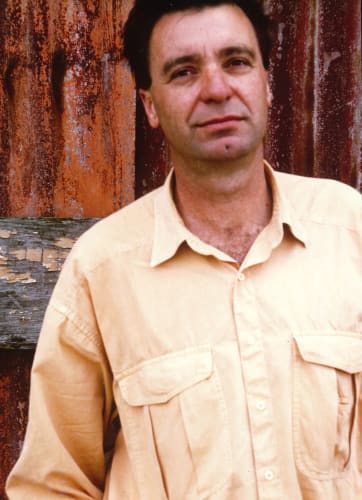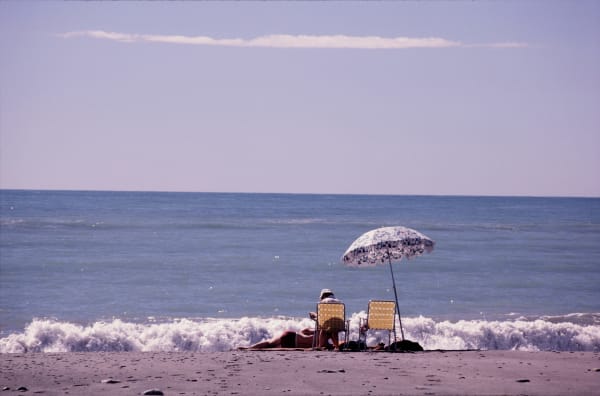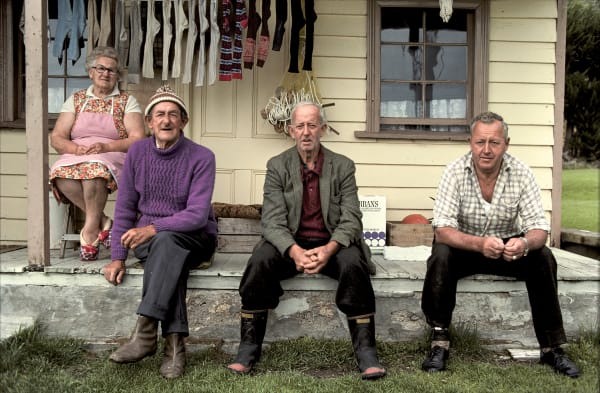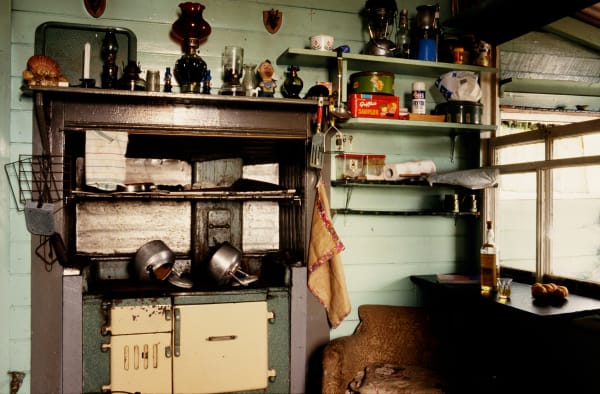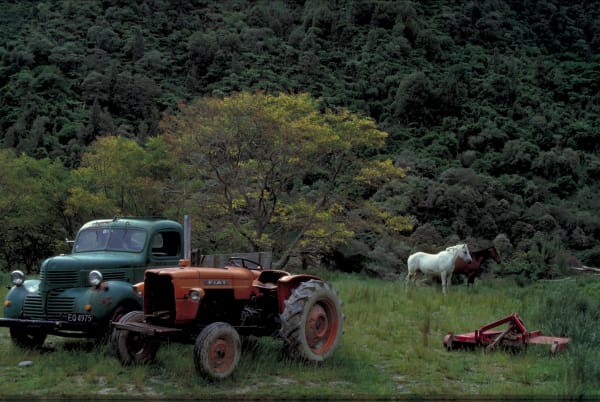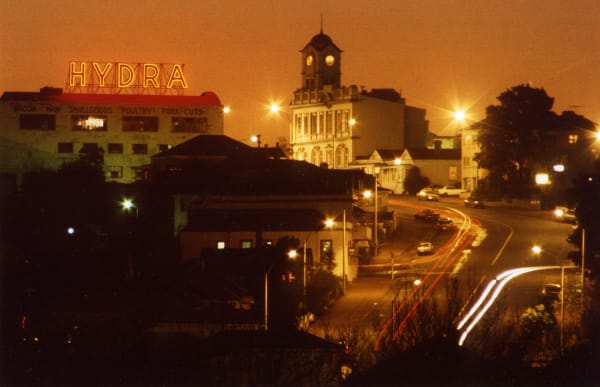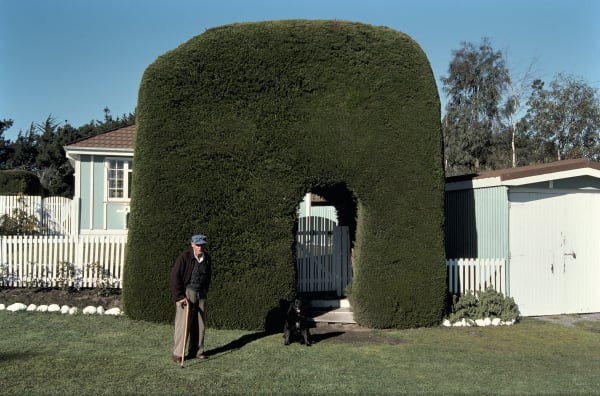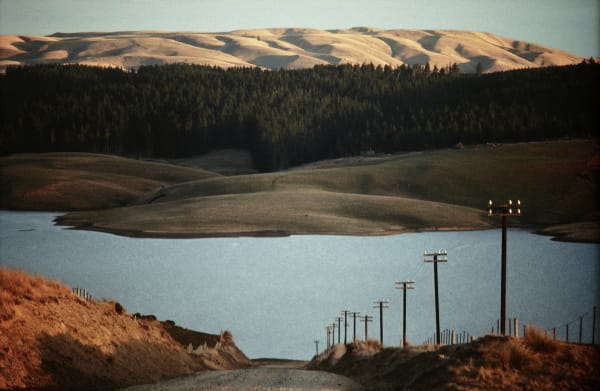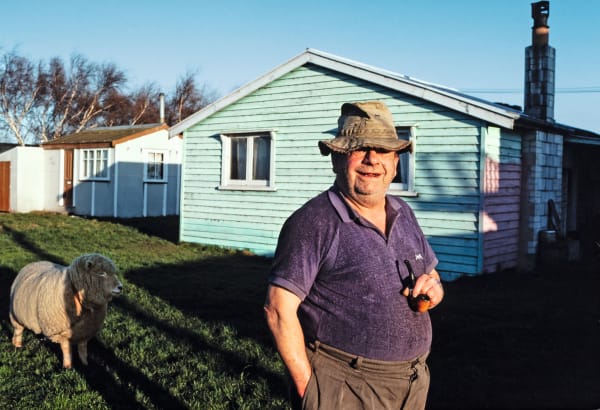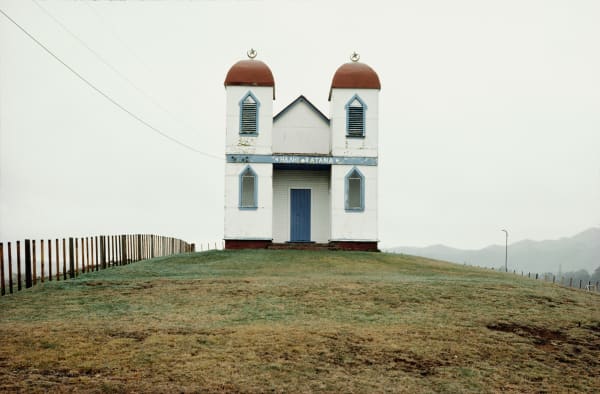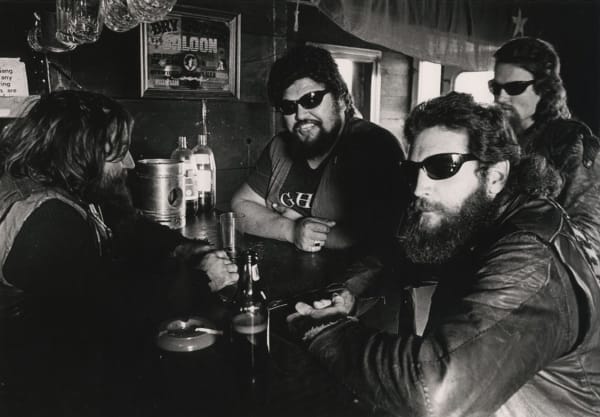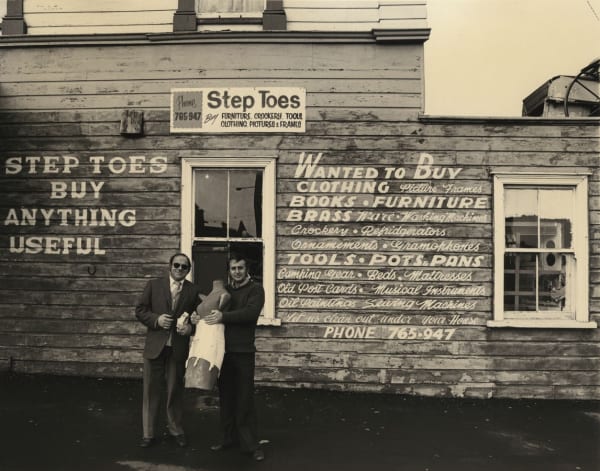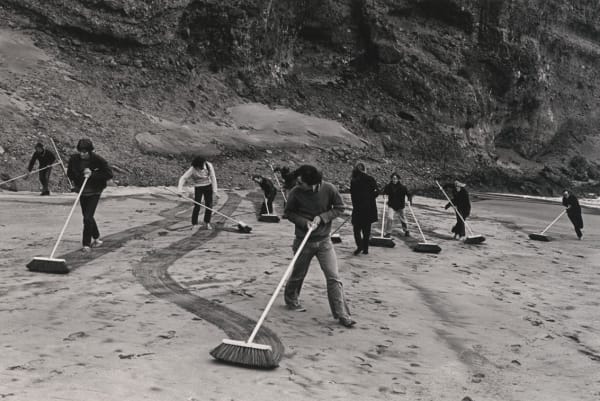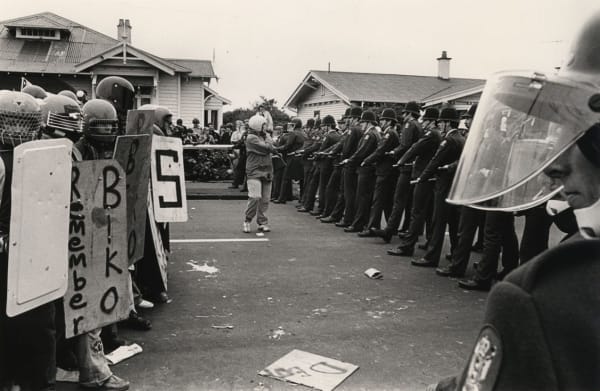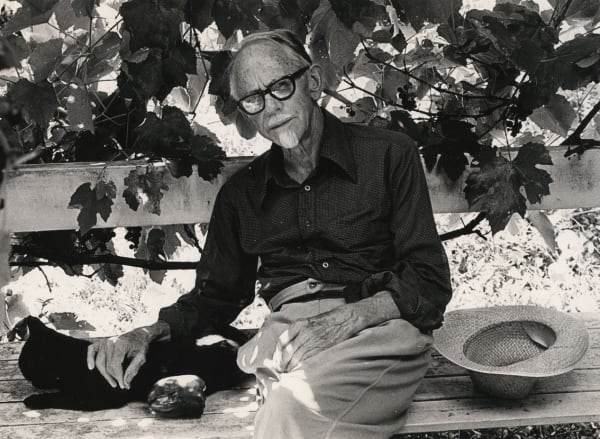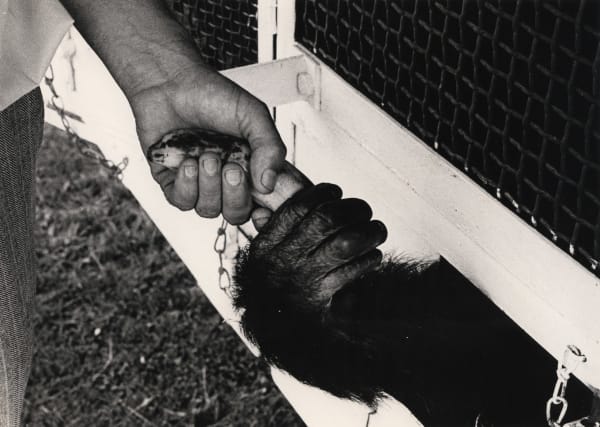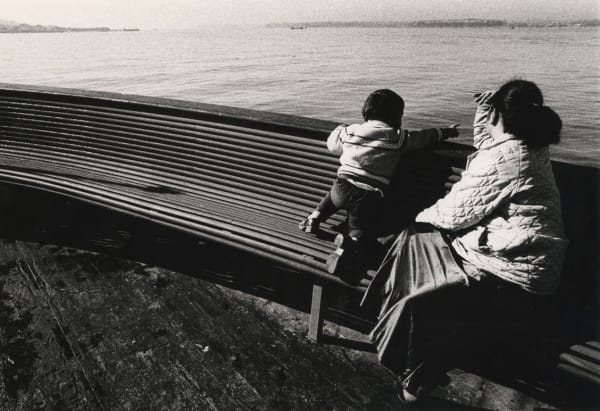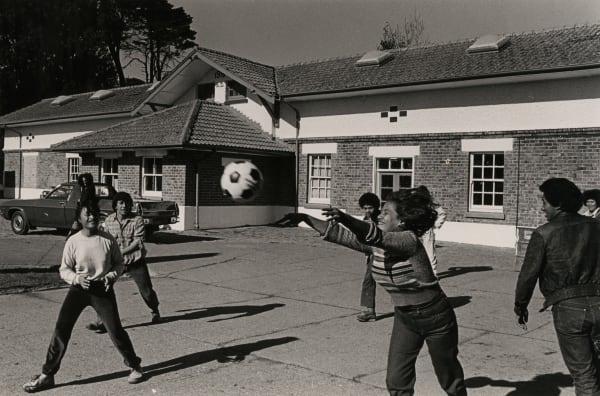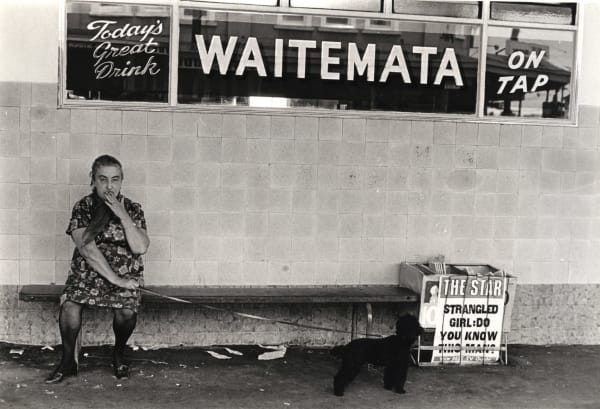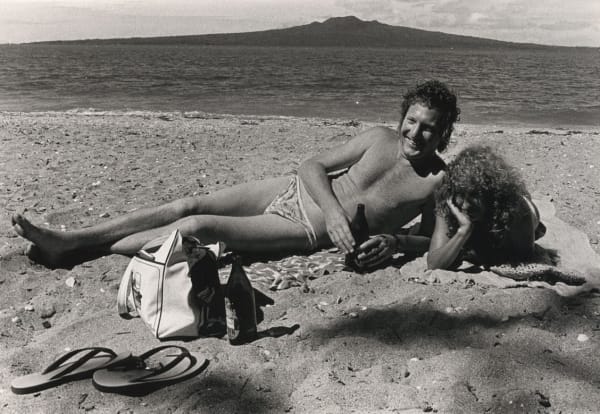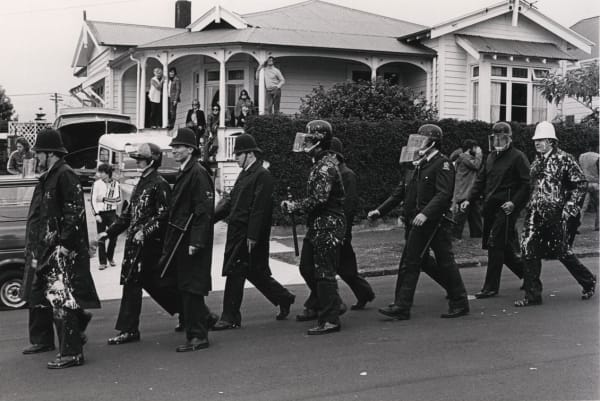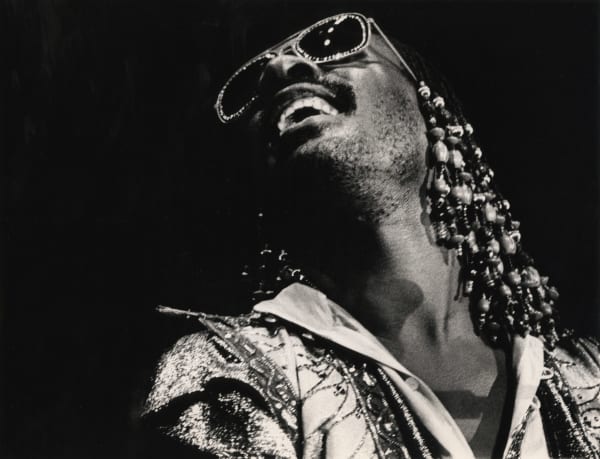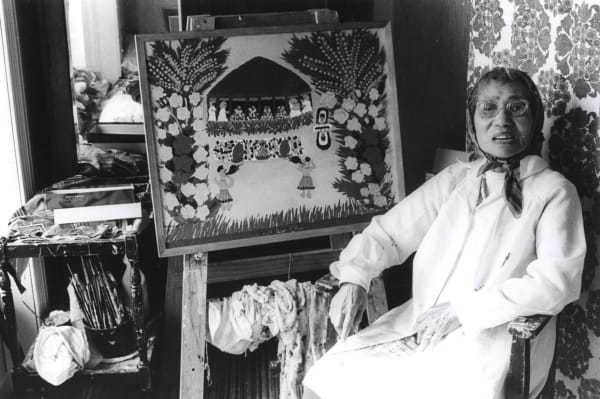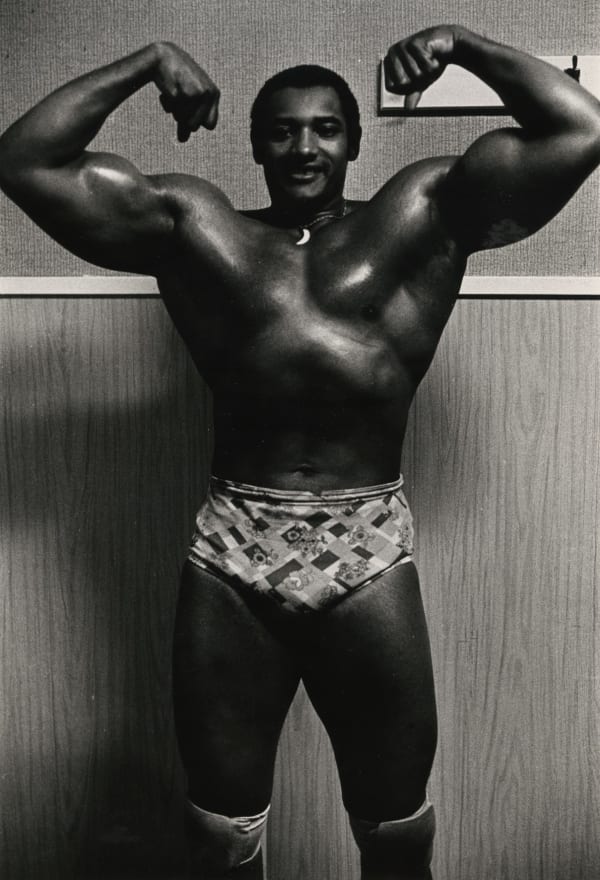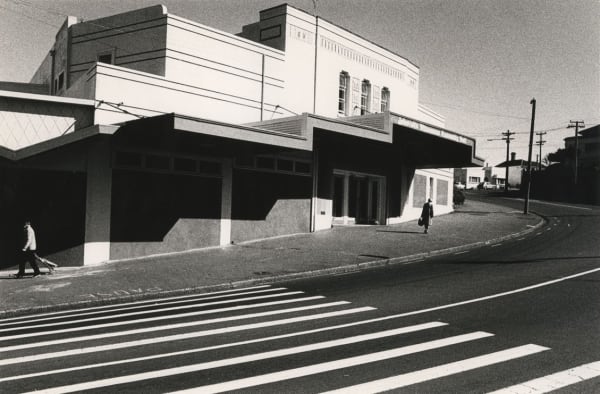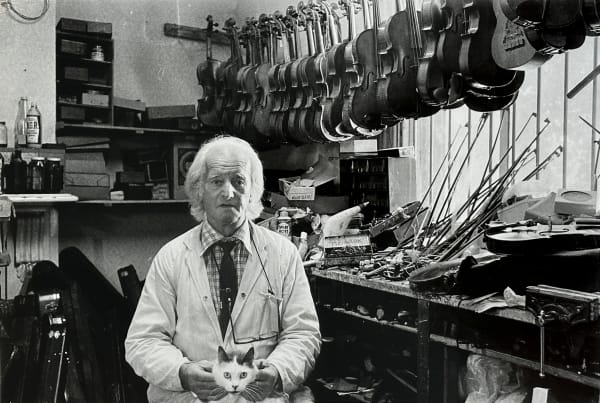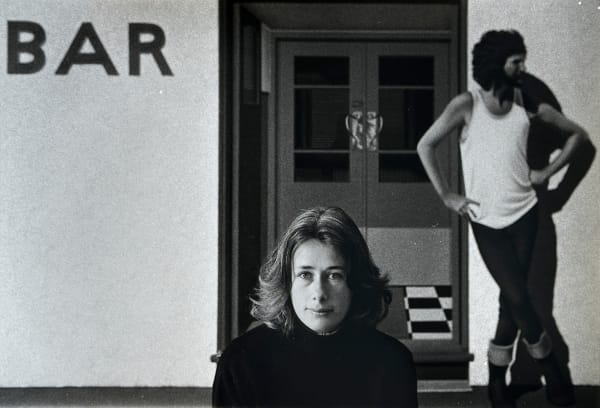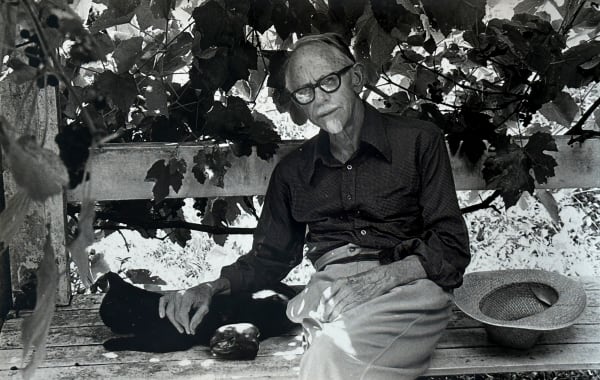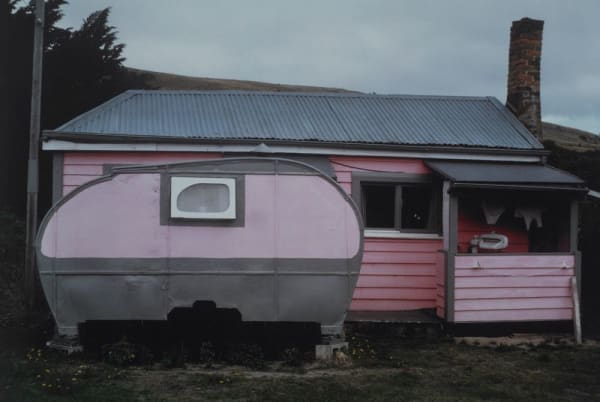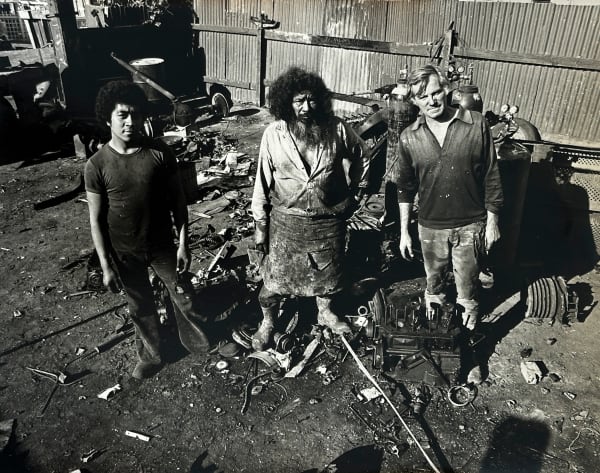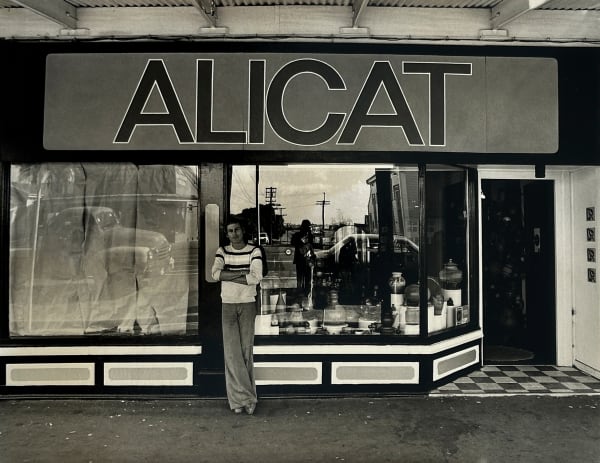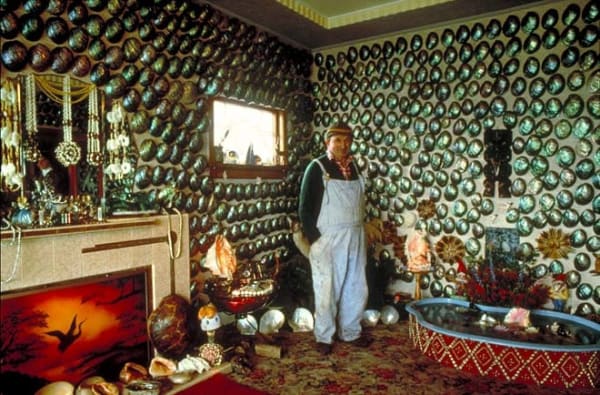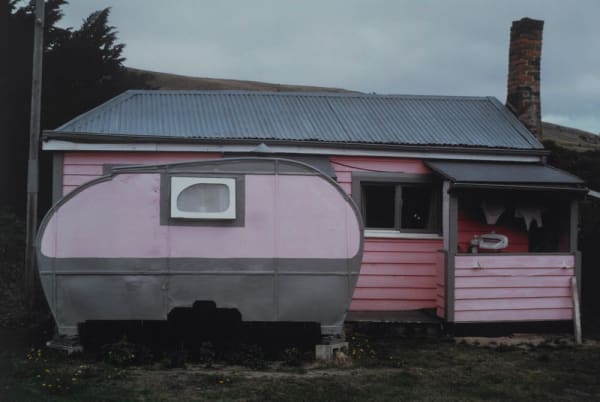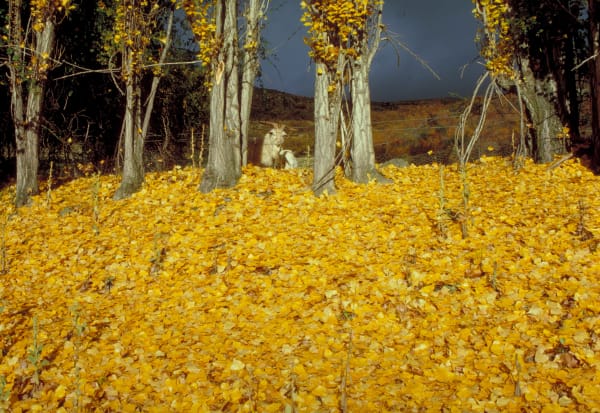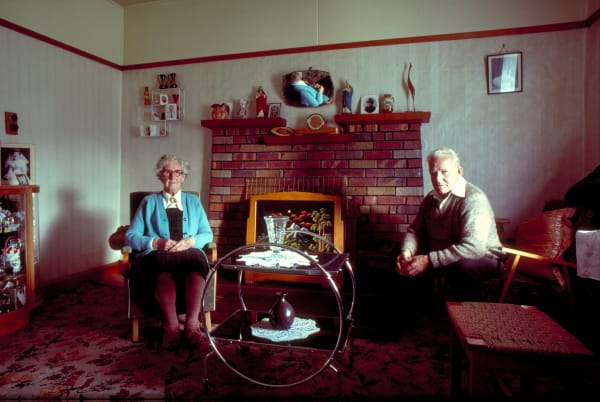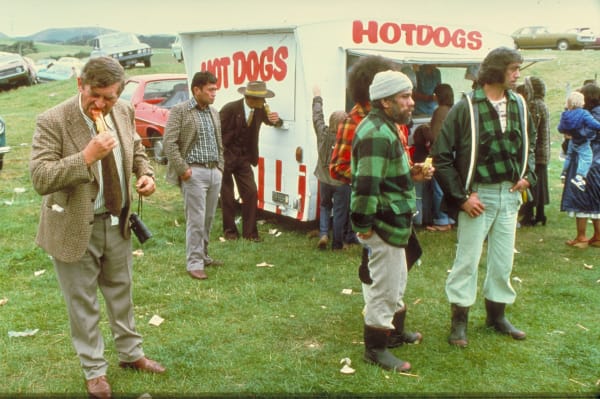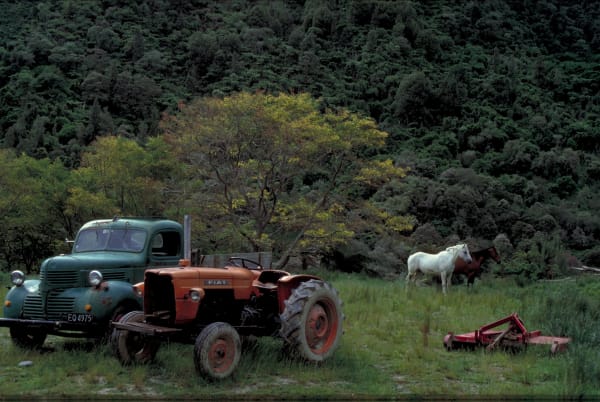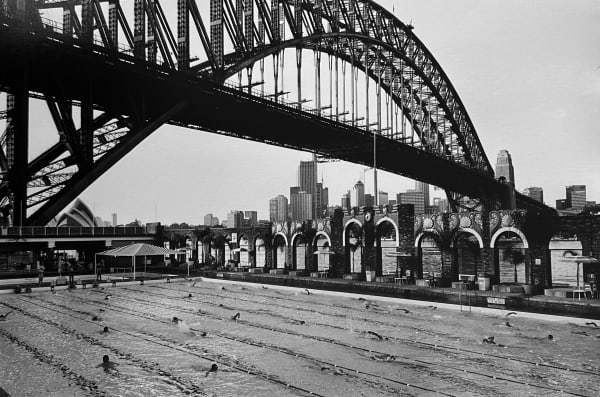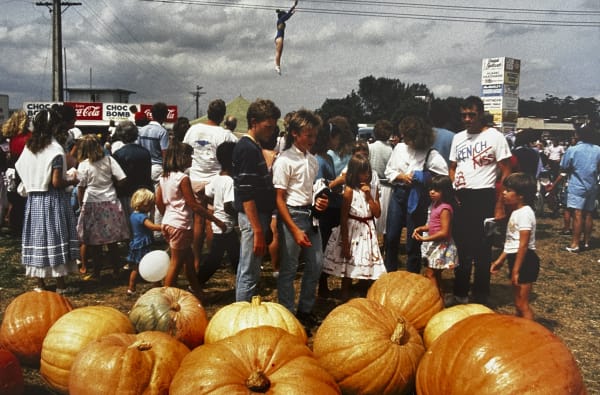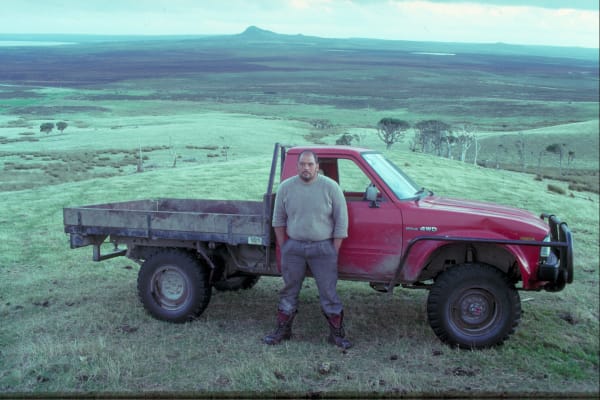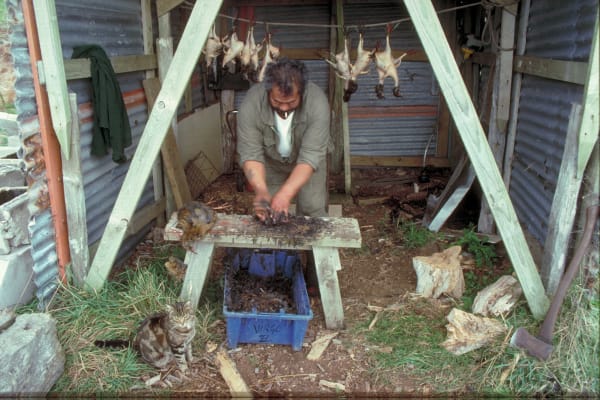Robin Morrison
“As a documentary photographer, Robin had a strong passion for photographing and capturing what he saw as the real New Zealand; he wanted to show what this country is really like, not just a superficial look. From his unique perspective, he showed us the landscapes, the characters, the small towns, the cities, and the changing face of New Zealand in the seventies, eighties and into the nineties. And in so doing, he created a historical record of our country, a visual platform for future generations to learn from, be inspired by and to add their chapters to the story.”
Robin Morrison was a renowned Aotearoa New Zealand photographer best known for his unpretentious portrayal of landscapes, everyday lives and unique architecture. He had the rare gift of being able to connect with people from all walks of life; from iconic figures such as Sir Edmund Hillary, Janet Frame, and Dame Whina Cooper, to shearing gangs, Anzac Veterans, and those living on the fringes of society.
In 1992, Morrison gifted his entire body of work of over 100,000 negatives and transparencies to Tāmaki Paenga Hira Auckland Museum, ensuring ongoing public access to this important resource of social history and photographic art.
{Suite} works with The Robin Morrison Estate to manage the image archive, print sales and copyright.
Caption from Jos Wheeler in ‘Capturing conflict: Robin Morrison’ by Andrea Stevens
-
 Blue sheep, Kaitangata, 1979$2,000 incl. GST unframed, $2,450 incl. GST framed
Blue sheep, Kaitangata, 1979$2,000 incl. GST unframed, $2,450 incl. GST framed -
 Bathers assisting the build-up of local sandfly population, Okarito, 1989$2,000 incl. GST unframed, $2,450 incl. GST framed
Bathers assisting the build-up of local sandfly population, Okarito, 1989$2,000 incl. GST unframed, $2,450 incl. GST framed -
 Christina and Bert Lewis and his brothers Shack and Bob, Deborah Bay, Otago, 1979$2,000 incl. GST unframed, $2,450 incl. GST framed
Christina and Bert Lewis and his brothers Shack and Bob, Deborah Bay, Otago, 1979$2,000 incl. GST unframed, $2,450 incl. GST framed -
 Fish and chip shop, Kaitaangata, 1979$2,000 incl. GST unframed, $2,450 incl. GST framed
Fish and chip shop, Kaitaangata, 1979$2,000 incl. GST unframed, $2,450 incl. GST framed -
 Range: Interior, Elderslee,, 1989$2,000 incl. GST unframed, $2,450 incl. GST framed
Range: Interior, Elderslee,, 1989$2,000 incl. GST unframed, $2,450 incl. GST framed -
 Trevor Kamo on the slopes of Mt Chudleigh, Chatham Islands, 1988$2,000 incl. GST unframed, $2,450 incl. GST framed
Trevor Kamo on the slopes of Mt Chudleigh, Chatham Islands, 1988$2,000 incl. GST unframed, $2,450 incl. GST framed -
 Truck, tractor and horse, location unknown, 1982$2,000 incl. GST unframed, $2,450 incl. GST framed
Truck, tractor and horse, location unknown, 1982$2,000 incl. GST unframed, $2,450 incl. GST framed -
 Bill Hammond, 1991$2,000 incl. GST unframed, $2,450 incl. GST framed
Bill Hammond, 1991$2,000 incl. GST unframed, $2,450 incl. GST framed -
 College Hill and Ponsonby's landmarks, the Post Office and Hydra Bacon factory, 1989$2,000 incl. GST unframed, $2,450 incl. GST framed
College Hill and Ponsonby's landmarks, the Post Office and Hydra Bacon factory, 1989$2,000 incl. GST unframed, $2,450 incl. GST framed -
 Hedge, Leithfield Beach, 1979$2,000 incl. GST unframed, $2,450 incl. GST framed
Hedge, Leithfield Beach, 1979$2,000 incl. GST unframed, $2,450 incl. GST framed -
 Lake Mahinerangi, Central Otago, 1979$2,000 incl. GST unframed, $2,450 incl. GST framed
Lake Mahinerangi, Central Otago, 1979$2,000 incl. GST unframed, $2,450 incl. GST framed -
 Norm Smith with his pet sheep Pebbles. Greenpark Huts, Canterbury, 1979$2,000 incl. GST unframed, $2,450 incl. GST framed
Norm Smith with his pet sheep Pebbles. Greenpark Huts, Canterbury, 1979$2,000 incl. GST unframed, $2,450 incl. GST framed -
 Ratana Church, Raetihi, King Country, 1982$2,000 incl. GST unframed, $2,450 incl. GST framed
Ratana Church, Raetihi, King Country, 1982$2,000 incl. GST unframed, $2,450 incl. GST framed -
 Telephone box on Rakino Island, Hauraki Gulf, 1989$2,000 incl. GST unframed, $2,450 incl. GST framed
Telephone box on Rakino Island, Hauraki Gulf, 1989$2,000 incl. GST unframed, $2,450 incl. GST framed -
 At the bar, 1981$2,000 incl. GST unframed, $2,450 incl. GST framed
At the bar, 1981$2,000 incl. GST unframed, $2,450 incl. GST framed -
 Billy and Wally of Step Toe’s second-hand shop, 1977$2,000 incl. GST unframed, $2,450 incl. GST framed
Billy and Wally of Step Toe’s second-hand shop, 1977$2,000 incl. GST unframed, $2,450 incl. GST framed -
 Dame Whina Cooper, 1975$2,000 incl. GST unframed, $2,450 incl. GST framed
Dame Whina Cooper, 1975$2,000 incl. GST unframed, $2,450 incl. GST framed -
 Dick Armstrong, second hand dealer, Dylan, and Keir, 1977$2,000 incl. GST unframed, $2,450 incl. GST framed
Dick Armstrong, second hand dealer, Dylan, and Keir, 1977$2,000 incl. GST unframed, $2,450 incl. GST framed -
 Experiment in sand, 1971$2,000 incl. GST unframed, $2,450 incl. GST framed
Experiment in sand, 1971$2,000 incl. GST unframed, $2,450 incl. GST framed -
 Facing off, 1981$2,000 incl. GST unframed, $2,450 incl. GST framed
Facing off, 1981$2,000 incl. GST unframed, $2,450 incl. GST framed -
 Frank Sargeson, 1975$2,000 incl. GST unframed, $2,450 incl. GST framed
Frank Sargeson, 1975$2,000 incl. GST unframed, $2,450 incl. GST framed -
 Human and primate hand holding a banana, 1970$2,000 incl. GST unframed, $2,450 incl. GST framed
Human and primate hand holding a banana, 1970$2,000 incl. GST unframed, $2,450 incl. GST framed -
 On the ferry, 1985$2,000 incl. GST unframed, $2,450 incl. GST framed
On the ferry, 1985$2,000 incl. GST unframed, $2,450 incl. GST framed -
 Ōtara Kokiri – August , 1981$2,000 incl. GST unframed, $2,450 incl. GST framed
Ōtara Kokiri – August , 1981$2,000 incl. GST unframed, $2,450 incl. GST framed -
 Outside the Gluepot, 1976$2,000 incl. GST unframed, $2,450 incl. GST framed
Outside the Gluepot, 1976$2,000 incl. GST unframed, $2,450 incl. GST framed -
 Sam Hunt and friend, 1985$2,000 incl. GST unframed, $2,450 incl. GST framed
Sam Hunt and friend, 1985$2,000 incl. GST unframed, $2,450 incl. GST framed -
 Single file, 1981$2,000 incl. GST unframed, $2,450 incl. GST framed
Single file, 1981$2,000 incl. GST unframed, $2,450 incl. GST framed -
 Stevie Wonder, 1981$2,000 incl. GST unframed, $2,450 incl. GST framed
Stevie Wonder, 1981$2,000 incl. GST unframed, $2,450 incl. GST framed -
 Teuane Tibbo, c.1978$2,000 incl. GST unframed, $2,450 incl. GST framed
Teuane Tibbo, c.1978$2,000 incl. GST unframed, $2,450 incl. GST framed -
 Western Springs Speedway, 1977$2,000 incl. GST unframed, $2,450 incl. GST framed
Western Springs Speedway, 1977$2,000 incl. GST unframed, $2,450 incl. GST framed -
 Wrestler, 1976$2,000 incl. GST unframed, $2,450 incl. GST framed
Wrestler, 1976$2,000 incl. GST unframed, $2,450 incl. GST framed -
 Wrestlers, 1985$2,000 incl. GST unframed, $2,450 incl. GST framed
Wrestlers, 1985$2,000 incl. GST unframed, $2,450 incl. GST framed -
 Zebra crossing, 1985$2,000 incl. GST unframed, $2,450 incl. GST framed
Zebra crossing, 1985$2,000 incl. GST unframed, $2,450 incl. GST framed -
 Violin maker Frederick Zettwitz and his cat, Auckland, 1978$5,000 incl. GST
Violin maker Frederick Zettwitz and his cat, Auckland, 1978$5,000 incl. GST -
 Portrait of Robin White sitting in front of her painting “Sam Hunt at the Portobello Pub”, 1978
Portrait of Robin White sitting in front of her painting “Sam Hunt at the Portobello Pub”, 1978 -
 Portrait of Frank Sargeson, 1978$5,000 incl. GST
Portrait of Frank Sargeson, 1978$5,000 incl. GST -
 Pink Caravan, Otago Peninsula. From the series: From the Road, South Island of New Zealand, Winter, 1979$5,000 incl. GST
Pink Caravan, Otago Peninsula. From the series: From the Road, South Island of New Zealand, Winter, 1979$5,000 incl. GST -
 Peter, Jack and Frank, Ponsonby Scrapmetals, Ponsonby Road, 1976$5,000 incl. GST
Peter, Jack and Frank, Ponsonby Scrapmetals, Ponsonby Road, 1976$5,000 incl. GST -
 Peter Sinclair, Alicat, Jervois Road, 1976$5,000 incl. GST
Peter Sinclair, Alicat, Jervois Road, 1976$5,000 incl. GST -
 John Moller, funeral director, and Noball, Ponsonby Road, 1976$5,000 incl. GST
John Moller, funeral director, and Noball, Ponsonby Road, 1976$5,000 incl. GST -
 Fred and Myrtle Flutey’s paua shell parlour, Bluff, 1981$6,000 incl. GST
Fred and Myrtle Flutey’s paua shell parlour, Bluff, 1981$6,000 incl. GST -
 Dick Armstrong, Second hand dealer, Jervois Road, and Dylan, 1976$5,000 incl. GST
Dick Armstrong, Second hand dealer, Jervois Road, and Dylan, 1976$5,000 incl. GST -
 Christ at Whangape Harbour, 1992$5,000 incl. GST
Christ at Whangape Harbour, 1992$5,000 incl. GST -
 Goats and Poplar leaves, Cardrona Valley, Otago, 1979$5,000 incl. GST
Goats and Poplar leaves, Cardrona Valley, Otago, 1979$5,000 incl. GST
Robin Morrison (1944-1993) was born in Devonport in Auckland, and attended Otago University where he studied anthropology. In 1965 he moved to London, joined soon thereafter by then-fiancé Dinah Bradley.
In 1967, while at the underground newspaper International Times, Morrison was asked to photograph an anti-Vietnam War demonstration, leading him to buy his first camera, a second-hand Voigtländer.
Returning home to Auckland in 1970, Morrison freelanced for a number of publications, before becoming a staff photographer for The New Zealand Listener. One of his first works was chosen for the cover: a portrait of Sir Edmund Hillary. In the mid to late 1970s, Morrison produced three calendars: images of the Wellington suburb of Thorndon (1976), the Auckland suburb of Ponsonby (1977), where he lived, and the Clutha calendar (1979).
Morrison also developed a passion for photojournalism: in 1978 he covered the Takaparawhau Bastion Point occupation, and three years later, the Springbok tour protests. Images of these difficult chapters in Aotearoa’s history are some of the most powerful and poignant of the time.
In 1978, Morrison published his first photographic book; Images of a House, a black and white study of the then-unknown Tauroa Homestead, by architect WH Gummer.
In 1979, Morrison was awarded a Queen Elizabeth II Arts Council grant and took his family on a seven-month South Island road trip, circling the island twice. The resulting publication, The South Island of New Zealand: From the Road was a critical and commercial success; in 1982 it became the first photographic book to win a New Zealand Book Award.
Over the following decade, Morrison produced over twenty more books of photography, including: A Sense of Place (1984); Homeplaces (1986) with Keri Hulme; Auckland: City & Sea (1989); A Land Apart: The Chatham Islands of New Zealand (1990) with Michael King; At Home and Abroad (1991); and Sydney in Black and White (1992).
After learning of a terminal cancer diagnosis, Morrison undertook his last major tour, photographing the Far North of New Zealand with Laurence Aberhart in October 1992. The work was published posthumously as A Journey (1994).
Before his death, Morrison gifted his entire body of work of over 100,000 negatives and transparencies to Tāmaki Paenga Hira Auckland Museum. A television documentary, Sense of Place: Robin Morrison, Photographer, featured interviews and footage of Morrison shortly before his death. Sense of Place won Best Documentary at the 1994 Film & TV Awards.
Robin and Dinah are survived by their sons, Jake and Keir.
